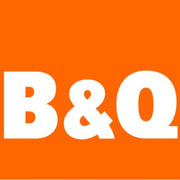Industrial floors see a lot of wear and tear. From daily forklift use to chemical spills and wet weather foot traffic, these surfaces go through a fair amount. Without regular safety checks in place, small problems can slip through the cracks and turn into real hazards. A quick sweep might clear things up for now, but it will not show hidden risks or uneven surfaces that could lead someone to take a fall. That is why routine floor assessments are worth paying attention to because it is far easier to prevent a problem than clean up after one.
Adding the right anti-slip solutions does not just protect people who work there, it also helps keep operations running without disruption. In factories, warehouses and other industrial spots, one minor slip could hold up an entire shift. With many businesses relying on proper flow between zones or departments, keeping the floor safe is part of keeping everything else on track. Safety assessments help spot the weak spots before they trip anyone up, and they work even better when paired with suitable surface support.
Identifying Risks In Industrial Flooring
Before anything can be fixed, there needs to be a clear idea of what is going wrong. Industrial places bring their own set of daily hazards, and not all of them are obvious.
Water, oil, mud and packaging residue can all end up on floors during busy shifts. When that happens, even surfaces that looked safe at the start of the day can become unpredictable as things progress.
Here are a few common types of flooring risks to watch for:
- Spills and leaks: Oil, soap or grease from equipment may linger on surfaces where drainage or clean-up protocols are not well-managed.
- Loose materials: Things like dust, scraps or scattered tools build up during work hours and are often missed during a quick clean.
- Smooth or aged surfaces: Worn surfaces like polished concrete or tiles may feel fine dry, but turn smooth and slippery with very little moisture.
- Poor transitions: Changes in floor levels or material types, especially in poorly lit areas, can cause people to stumble or lose their footing.
- Weather-related issues: Rain brought in by footwear at entry points or the build-up of ice near external storage or loading areas can make floors risky fast.
Spotting these hazards early comes down to staying alert and listening to those who use the space every day. Workers often know which areas give them trouble long before they become recorded incidents. Keeping track of near-misses and casual comments can help form the bigger picture of where attention is really needed.
Conducting Thorough Floor Inspections
Safety inspections need more than a passing look. A useful inspection means slowing down, getting up close and covering the entire space.
This kind of check usually involves walking the stretch of floor in sections, keeping an eye out for slick spots, wear, pooling water or build-up from operations. Cut-through traffic, doorways and areas near equipment are worth closer inspection, as these spaces are usually the busiest and show the first signs of trouble.
A standard inspection process might include:
1. Covering all zones piece by piece, watching for slippery patches or messy sections.
2. Spotting areas with heavy foot or machine traffic, particularly at entryways, corners or stations where turning or stopping happens often.
3. Reviewing floor surfaces to see whether materials are holding up or wearing down.
4. Investigating drainage and any signs of past leaks, especially in places like cold storage or wash-down areas.
5. Asking workers briefly where they notice slippery spots or issues at different times in the day.
Inspections are not just about ticking boxes. They structure the safety checking process so large buildings and facilities don’t end up with overlooked corners. When done on a regular basis, these checks will often highlight the same zones that can then be tracked for ongoing risk.
Implementing Effective Anti-Slip Solutions
Once problem spots are noted, it is time to work out which solution fits best. Picker routes, production lines, loading bays, corridors, and cleaning areas might all have different flooring needs.
A few widely used anti-slip options include:
- Anti-slip coatings: These are applied over existing floors like concrete or tile. They add grip and texture and are quite useful when you want to keep a consistent surface across wider work areas. Colour-coded coatings also help with quick identification of high-traffic zones.
- Slip-resistant mats and tiles: These are effective in places where moisture is expected or where machinery movement makes fixed solutions harder to manage. They are easy to lift or re-lay for cleaning underneath.
- GRP panels and step covers: These work well in locations with a lot of foot traffic or where stairs and raised walkways are part of daily routines. The glass-reinforced plastic holds up under pressure and holds its slip resistance longer than many traditional floorings.
- Floor tapes and strips: These are good for short-term fixes or marking out temporary areas. Handy for quick improvements while waiting for other installations to be completed.
Choosing between these depends on the issue at hand. A distribution centre, for example, may benefit from coatings in wide corridors and switch to durable mats near rinsing points. Warehouses with frequent stair use might prefer long-lasting GRP treads over temporary fixings.
One solution will not do it all, but pairing the option to the condition will always go further than a generalised fix.
Monitoring And Maintenance
Once the right anti-slip product goes in, the job is not done. Any product installed where work is active will wear down eventually. That is why maintenance is just as important as picking the right solution in the first place.
Keep things working smoothly with a few steady routines:
- Set up a timeline for checks—weekly, monthly, or per shift depending on use.
- Walk surfaces after installation and watch for peeling edges or patches losing grip.
- Focus attention on regularly used access points, near machines or busy walking paths.
- If something is no longer working, remove and replace it. Quick fixes can give false confidence and lead to injuries.
Getting feedback from staff also plays a role here. If someone says certain steps are still slippery despite surface protection, that opens up a chance to find and fix the underlying issue.
One case we saw involved anti-slip covers at a loading dock staircase. Although the covers themselves were fine, backed-up water during heavy rain was spilling onto the steps. Clearing out the drain and checking the seal between levels solved the issue without needing to change the product.
Keeping Everyone Safe and Productive
Small floor hazards can become big setbacks when they are ignored. From minor injuries keeping people off work to delays in schedules and even increased costs, a simple slip can mean more than just a momentary pause.
Inspection and anti-slip planning are not about being cautious for the sake of it. They are about building long-term habits that protect both people and systems. Finding one issue at a time and solving it gives your floor more life and your staff more peace of mind.
Nothing needs to change overnight. A steady pace toward safer ground can bring not just fewer accidents, but smoother working days as well. By combining the right support underfoot, ongoing checks and honest feedback from those doing the work, a dependable industrial space gets more than stability—it gets confidence.
To keep your workplace safer and more reliable, it's worth taking a closer look at practical solutions that lower the risk of slips. Slips Away offers a dependable range of options, including anti-slip choices designed to improve surface grip and reduce hazards over time.














